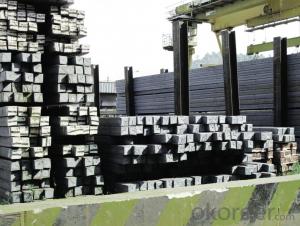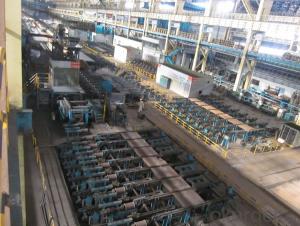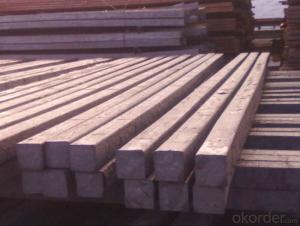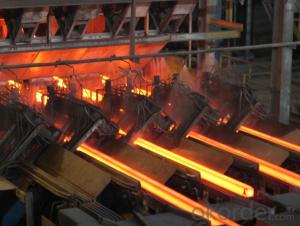Q235/3SP 75MM Blast Furnace Hot Rolled Steel Billet
- Loading Port:
- Tianjin
- Payment Terms:
- TT OR LC
- Min Order Qty:
- 100 m.t.
- Supply Capability:
- 30000 m.t./month
OKorder Service Pledge
OKorder Financial Service
You Might Also Like
Description of Q235/3SP 75MM Blast Furnace Hot Rolled Steel Billet
Our hot dip galvanised steels consist of a steel substrate with a metallic zinc coating applied by means of a continuous hot dip galvanising process. Metallic zinc coatings are available in steel grades ranging from steel for bending and deep drawing applications, to structural steels and high yield strength steels.
A glossy surface finish obtained under specific skin-pass conditions (either non-skin-passed or skin- passed with smooth cylinders to obtain low roughness) can be provided if required at time of enquiry.
Advantage of Q235/3SP 75MM Blast Furnace Hot Rolled Steel Billet
Uncoated CR steel sheet With the features of in line with the international highest standards in demension and shape, excellent surface finish and properties, the products are mainly used in home appliance and automobile industries.
Galvanized steel sheet(include HDG and EG)
With the features of good corrosion resistance, the products are mainly used in automobile, home appliance, electronics, building and machinery manufacture industries, etc.
Precoated steel sheet With the features of enviromental protection and good processablility, long lasting surface durability, rich in colors, the products are maily used in building, home appliance and furniture industries, etc.
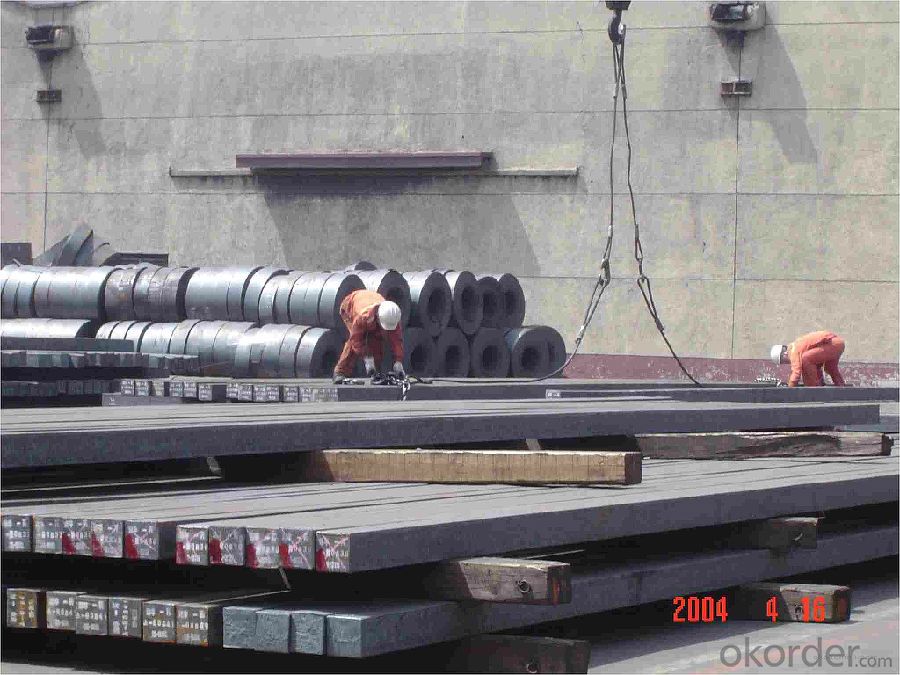
Applications of Q235/3SP 75MM Blast Furnace Hot Rolled Steel Billet
Our hot dip galvanised steels can be used in a very wide range of applications for industrial markets, both indoors and outdoors. Some of the most common applications are:
Building: wide sections for roofing and cladding, doors, door frames, metallic ceilings, partitions, structural members etc
Domestic appliances: all appliances for this sector (both white and brown goods) are manufactured with hot dip galvanised steels
Miscellaneous: electrical cabinets, aeraulic components, air conditioners, road signs etc
Zinc hot dip galvanised steel is suitable for contact with foodstuffs under certain conditions, as specified in European directive 89/109/EEC and French standard NF A 36-712-1. Please contact us for further information on this subject.
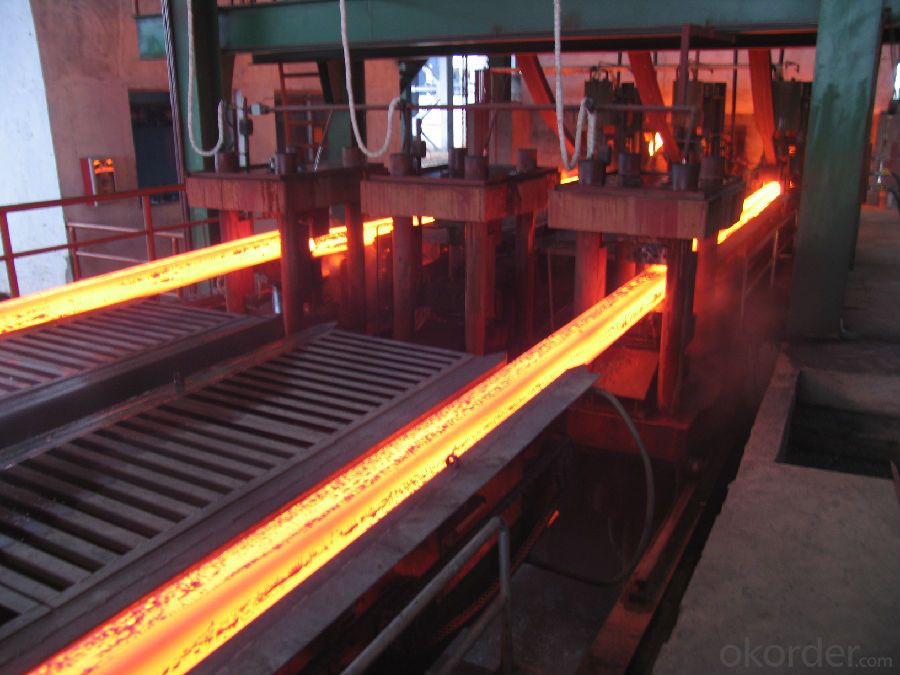
Specifications of Q235/3SP 75MM Blast Furnace Hot Rolled Steel Billet
Quality | Q/BQB 440-2003 | JIS G3312-1994 JIS G3321 | EN 10326-2004 | ASTM A653-02a |
EN 10327-2004 | (BASE PLATE) | |||
(BASE PLATE) | ||||
Commercial Steel | DC51D | SGCC SGLCC | DX51D+Z DX51D+AZ | CS Type A/B/C |
Forming Steel | St01,St02,St03 | SGCD1 SGLCD1 | FS Type A, Type B | |
Drawing | DC52D /DC53D | - | DX52D+Z DX52D+AZ | DDS TYPE A/C |
Steel | DX53D+Z DX53D+AZ | |||
Structural | S280GD (StE28) | SGC400 SGLC400 | S280D+Z DX54D+AZ | SS275 |
Steel | S350GD (StE34) | SGC440 SGLC440 | S350D+Z S350D+AZ | SS340 Class1 |
FAQ of Q235/3SP 75MM Blast Furnace Hot Rolled Steel Billet
We have organized several common questions for our clients,may help you sincerely:
1. How Can I Visit There?
Our company is located in Tianjin City, China, near Beijing. You can fly to Tianjin Airport Directly. All our clients, from home or aboard, are warmly welcome to visit us!
2. How Can I Get Some Sample?
We are honored to offer you sample.
3. Why choose CNBM?
Our delivery time about 15-20days for standard sizes, if you have other requirements like hardness, quanity and width ,it is about 20-40days. But don't worry we also try our best for the delivery time ,because time longer and our cost is higher.
- Q:What is the role of steel billets in the construction of residential buildings?
- Residential building construction heavily relies on steel billets, which have a crucial function. These elongated steel bars, with their rectangular shape, act as the primary raw material for producing different structural components used in the construction process. One major application of steel billets lies in the creation of reinforced concrete structures. Due to its exceptional strength and durability, reinforced concrete finds extensive use in building foundations, columns, beams, and slabs. To enhance the structural integrity of the building and provide tensile strength, steel billets are employed in the manufacturing of rebar. This rebar is then embedded within the concrete, allowing the building to withstand external forces like wind, seismic activity, and its own weight. Moreover, steel billets find utility in the production of steel beams and columns. These components play a crucial role in supporting the building's weight and transferring loads from the upper floors to the foundation. Steel beams offer superior strength and rigidity, enabling the construction of open and spacious interiors without the need for excessive support walls. This not only provides design flexibility but also maximizes the usable space within residential buildings. Steel billets also contribute to the construction of stairs, handrails, and balconies. These architectural elements necessitate materials with high strength to ensure the structure's safety and longevity. By providing the necessary strength and stability, steel billets enable safe and secure access to different areas of the building. In conclusion, steel billets are of utmost importance in residential building construction, serving as the raw material for various structural components. From reinforced concrete structures to steel beams, columns, and other architectural elements, steel billets play a vital role in ensuring the strength, durability, and overall safety of residential buildings.
- Q:How are steel billets used in the manufacturing of industrial machinery parts?
- Steel billets are an essential component in the manufacturing of industrial machinery parts due to their unique properties and versatility. These billets are semi-finished steel products that are typically cast in a square or rectangular shape. They serve as the starting material for various industrial machinery parts, including gears, shafts, pistons, and other critical components. The first step in utilizing steel billets is to heat them to a specific temperature, which allows for easier manipulation and shaping. Once heated, the billets undergo a process called hot rolling, where they are passed through a series of rollers to reduce their cross-sectional area and increase their length. This process not only enhances the strength and durability of the steel but also refines its microstructure, resulting in improved mechanical properties. After hot rolling, the steel billets are typically further processed through machining operations such as cutting, drilling, milling, and grinding to achieve the desired dimensions and specifications required for specific machinery parts. These operations ensure precision and accuracy, allowing for seamless integration of the parts into the overall machinery assembly. Steel billets are particularly favored in the manufacturing of industrial machinery parts due to their high strength, toughness, and resistance to wear and tear. Their excellent machinability enables complex designs and intricate patterns to be achieved, ensuring optimal functionality and performance of the machinery. Moreover, steel billets can be easily welded, making them suitable for joining multiple parts together to create more substantial and robust structures. In conclusion, steel billets play a crucial role in the manufacturing of industrial machinery parts. By providing a strong, durable, and versatile starting material, they enable the creation of precise and reliable components that ensure the smooth operation of industrial machinery in various sectors such as manufacturing, construction, and transportation.
- Q:What is the maximum length of a steel billet?
- The maximum length of a steel billet can vary depending on various factors such as the manufacturing process, equipment capabilities, and specific industry requirements. In general, steel billets can range in length from a few inches to several meters. However, it is important to note that longer billets are often more challenging to produce and handle due to their increased weight and potential for deformation. Therefore, the maximum length of a steel billet is typically determined by practical considerations and operational limitations within the steel industry.
- Q:What are the different methods of shaping steel billets?
- There are several methods of shaping steel billets, including hot rolling, cold rolling, forging, extrusion, and casting. Each method involves different techniques and processes to shape the steel billets into desired forms and dimensions.
- Q:What is the role of steel billets in the manufacturing of pressure vessels?
- Steel billets are primarily used in the manufacturing of pressure vessels as the starting material for forging or rolling processes. They are heated and shaped into the desired form, providing the necessary strength, durability, and resistance to high pressure and temperature that pressure vessels require.
- Q:Are steel billets used in the manufacturing of tools?
- Yes, steel billets are commonly used in the manufacturing of tools. Steel billets are semi-finished steel products that are typically hot-rolled or forged into various shapes, including bars, rods, and sheets. These billets serve as the primary raw material in tool manufacturing, as they provide the necessary strength, durability, and machinability required for producing high-quality tools. By shaping and machining the steel billets, manufacturers can create a wide range of tools such as wrenches, hammers, screwdrivers, drill bits, and cutting tools. The use of steel billets ensures that these tools possess the necessary hardness, toughness, and resistance to wear and tear, making them reliable and long-lasting. Therefore, steel billets play a crucial role in the production of tools, contributing to the overall efficiency and functionality of various industries.
- Q:How are steel billets used in the production of industrial machinery?
- Steel billets are essential components in the production of industrial machinery. They serve as the raw material that is shaped and transformed into various machine parts. The billets are typically heated and then subjected to a number of manufacturing processes such as forging, rolling, or extrusion. One common method of using steel billets in industrial machinery production is through forging. In this process, the billets are heated to a high temperature and then shaped by applying compressive forces using a forging press or hammer. This allows the steel to be molded into the desired shape and size, creating components such as gears, crankshafts, or connecting rods. Another method is rolling, where the heated steel billets are passed through a series of rollers to gradually reduce their thickness and shape them into long sheets or bars. These rolled steel products can then be further processed and used in the construction of machine frames, chassis, or structural components. Extrusion is another technique that utilizes steel billets in industrial machinery production. In this process, the billets are heated and forced through a die to create complex shapes with consistent cross-sections. Extruded steel parts are commonly used in the production of machine components such as tubes, pipes, or profiles. Overall, steel billets form the foundation for the manufacturing of industrial machinery. They undergo various shaping and transformation processes to create the necessary components that contribute to the overall functionality and durability of the machinery.
- Q:What are the different types of defects that can occur in steel billets?
- There are several types of defects that can occur in steel billets, including surface cracks, internal voids, segregation, inclusions, and dimensional inconsistencies. These defects can affect the quality and structural integrity of the billets and may require further processing or remedial measures to ensure their suitability for use in various applications.
- Q:Is there an export duty? Or is there a tax refund?
- Your specification 13*13*6 or 12 meters, this is a square cross section, so 7207120000 this can not be used, your billet carbon content is 0.17 to 0.23% less than 0.25%, so we must use the following7207190000 Other Billets with carbon content less than 0.25%Export tax refund: 0%MFN country of import tariff: 2%General customs duties: 11%Export tariff rate: 0%VAT: 17%
- Q:What are the main factors affecting the strength of steel billets?
- The main factors affecting the strength of steel billets are the composition of the steel, the heat treatment process, and the presence of any impurities or defects in the billet.
1. Manufacturer Overview |
|
|---|---|
| Location | |
| Year Established | |
| Annual Output Value | |
| Main Markets | |
| Company Certifications | |
2. Manufacturer Certificates |
|
|---|---|
| a) Certification Name | |
| Range | |
| Reference | |
| Validity Period | |
3. Manufacturer Capability |
|
|---|---|
| a)Trade Capacity | |
| Nearest Port | |
| Export Percentage | |
| No.of Employees in Trade Department | |
| Language Spoken: | |
| b)Factory Information | |
| Factory Size: | |
| No. of Production Lines | |
| Contract Manufacturing | |
| Product Price Range | |
Send your message to us
Q235/3SP 75MM Blast Furnace Hot Rolled Steel Billet
- Loading Port:
- Tianjin
- Payment Terms:
- TT OR LC
- Min Order Qty:
- 100 m.t.
- Supply Capability:
- 30000 m.t./month
OKorder Service Pledge
OKorder Financial Service
Similar products
New products
Hot products
Related keywords

